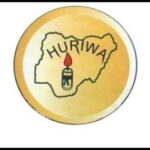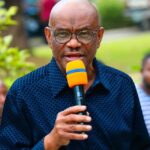Two days before the dialogue, on Thursday, September 25, during our class in the Centre for Development of Advance Computing, Mohali, Chandigarh, India, the management announced that all participants were requested to assemble in the auditorium at 3:30 p.m.
My heart beat faster and my BP rose. I thought there was an announcement that Pakistan and India were going to another war, as Chandigarh, one of the cities in Punjabi State and is the only and nearby cross border between the two countries. I felt like I was going to collapse because of sheer terror.
But in a few seconds the brief by our coordinator changed our mood, as he continued with very warm greetings. He said “we hope you are enjoying your study at our centre as well as stay in the city. The management has planned a tour for all the participants to visit Amritsar-Wagha border between Pakistan and India as part of the study tour.”
He concluded that, “It will be pertinent to mention that as per direction from Ministry of External Affairs (MEA), Government of India, the study tour is part of training/ course and mandatory for each participant.”
India and Pakistan have fought three wars since becoming independent from Britain in 1947, two of them over Kashmir. The border has been a site of numerous conflicts and wars between each country, and is one of the most complex borders in the world.
A true adventure trip sprinkled with plenty of magic real story, this trip to “the most dangerous border” took about a whole day, with participants of over 70 students from 48 countries who are all civil servants including a Nigerian lady who worked also in one of the Nigerian government electronic media. This reporter, who found himself among the lucky participants, was the only student from a private organization from the entire 48 countries.
Our trip was made after Pakistan President, Sharif made plain in his U.N. speech on Friday, September 27, that he wanted as quoted in several media “to make a new beginning” with India, saying the two countries could “prosper together” to benefit the entire South Asian region instead of wasting resources in their arms race.
Analysts and spectators expected Sunday’s meeting would address a series of fatal clashes along the so-called Line of Control dividing the Himalayan region between India and Pakistan, which followed a pact by the two nations to resume stalled talks to strengthen ties, while the talks could ease tension between the two nuclear powers.
This writer was lucky to get the admission from this centre for a two months course, and incidentally, was lucky finally to have his centre in the city called Peace City, Chandigarh where the current Prime Minister of India comes from, and according to history, where he had his early life and education. Manmohan Singh was born to Gurmukh Singh and Amrit Kaur on September 26, 1932, in Gah, Punjab, British India, into a Sikh family.
After the Partition of India, his family migrated to Amritsar, India, studied at Panjab University, Chandigarh. His family migrated to India during its partition in 1947.
It was very exciting and a great opportunity to visit Amritsar. As visitors we witnessed the Indo-Pak Retreat ceremony at Wagah-Attari border between the two countries border security forces and which is a tourist site between Indian- Pakistan. Tourism revenue have been increasing every blessed day from Monday to Friday. The small, non-descript, tiny village that gained limelight in 1947 when sub-continented into India and Pakistan, Attari-Wagah today is thriving with thousands of visitors witnessing the well-orchestrated drill between the two forces.
We were lucky this year to be among the thousands of visitors who arrived for the ceremony which became a daily peace mission at sunset. Located 31 kilometers west to Amritsar, the Wagah has been witness to the decades-long history of Pakistan and India ties. Whenever there is low or high in the relations of the two estranged neighbours, it is reflected here and when there is normalcy between the two countries, its effects are also reflected at the same place too.
The day-to-day activities thrive in this border, which became only officially agreed land route between the two countries. It was in 2008 that trucks were allowed through this border post to ferry goods, which aims to provide better facilities for goods to cross over or brought in. The trade boosts businesses in both borders and links India with Afghanistan, Central Asia and the rest of the world through road.
There is a festivity and nationalism to the peak as the people danced to the tunes of patriotic songs played ahead of the drill, aimed to lower the national flags in the evening. The Wagah, which largely is on Pakistan’s side, used to be a resting place for visitors between two cities since middle ages and it has witnessed the bloodshed during the partition too.
I estimated that up to 100,000 people from Monday to Friday witnessed the ceremony. It was in 1959 that BSF and Pakistan Rangers agreed to start a joint drill, which became and known as Retreat Ceremony. The best thing about this is that the drill survived the worst times of 1965 and 1971 wars too.
The two countries had gallery meant for the people to watch the ceremony with both sides having a portrait picture of the great heroes, the father of India, Mahatma Gandhi and Mohammed Ali Jinnah, the founder of Pakistan fixed on top of the two borders.
The pomp and pageantry of the beating retreat and the change of guard within hand shaking distance of the Indian and Pakistani forces makes for a most charming spectacle. Wagah, an army outpost between Amritsar and Lahore, is an elaborate complex of buildings, roads and barriers on both sides. The daily highlight is the evening “Beating the Retreat” ceremony. Soldiers from both countries march in perfect drill, going through the steps of bringing down their respective national flags. As the sun sets, nationalistic fervour rises and lights are switched on marking the end of the day amidst thunderous applauses.
As a visitor, it was when I was there that I saw the aptness of gani ya kori ji a Hausa proverb, literally meaning seeing is believing. The border replay brings history each day, from sun up to sun down, at the Wagah border gate between India and Pakistan, the complex, intertwined, and still painful histories of these neighbouring countries are replayed in scenes of joy, reunion, patriotism, belligerence and battle.
If you were an emotional person, the mini-dramas of the day that climax in the lowering of the flags, would make you to shed tears of joy, because as the sun falls lower on the horizon, the seats fill with crowds. With respective governments having built amphitheaters for visitors to seat and listen, many are in a festive mood and wave flags of each country, and the crowds ready to cheer.
Pakistani side: Colors are white and green, most men dress in white, and green comes from the many Pakistani flags. The seat is divided into separate areas for men and women.
Indian side: The amphitheater is full, bursting and all seats are taken, men and women and families sit together, with their cloths in rainbow colours spread through the crowds.
You would be confused which country you would listen to and follow its slogan/chanting, because both have men serving as cheerleaders, and using the opportunities from men and women, citizens including tourists and visitors, for the warming up of their own crowd, urging all to raise their voices in patriotic chanting with slogan and battle cries. On the Pakistani side one can hear: Allahu Akbar! Allahu Akbar!! Allahu Akbar!!! Gie Pakistan! Pakistan La’ila –ha’illallah! or Pakistani bus dosti (meaning friendship). Pakistan Jindabad “long live Pakistan.”
I was able to listen to Indian crowd roars very well, due to the reason that we made entry to the pavilion of foreign delegates as part of the special treatment we got from Ministry of External Affairs and C-DAC. I was in their country side, their voices loud with their in-built amphitheaters loud speaker with some emotional and colourful dancing carrying their flags, chanting and roaring back as you could hear “Jetega bhai Jeetega, Hindustan jeetega, Yaaro koi ko, yeh desh hai veer jawano”, meaning “Hail Hindustan!, hail Mother India!” “Jai Jawan Jai Kasan!, jai hind and jai bharat”, “I love you India, we salute you, mother!” screaming “long live India” with national slogans merely to incite the other side with true sense of belonging. They said severally that “Indian would win, this is the country of great people”.
But all this, according to an article written in the Foreign Policy in 2011, the border was known as the most dangerous. While there, our fear became part of joy and happiness.
With unspoken emotion, I found myself in these two countries, and they changed my perception to a great extent. It is sad to see two nations with so much in common distrust and, in general, hate each other. They have similarities in language, culture and ethnicity.
It is my belief that if you have not attended the evening flag lowering between these two nuclear weapon countries, you would not understand how it makes them more united than separated. The ceremony signifies peace, hope, joy and love, vigilance, truth and loyalty and finally symbolizes the role of religions within the two countries’ populace.
As a traveler you need to carry your identity card, passport and visa (duplicate) with you, it’s important thing to remember to switch off your mobile on reaching Wagah Border, to avoid damage/disconnection of Sim card because of security reason. Handsets do not work here.
If you plan to embark on this trip, make sure you are at the pavilion of foreign delegates, ensure that you have destination, contact address and telephone numbers with you. Do not exchange your valuables with any one; purse, eatables, cigarette, match box among others. They are not allowed at Wagah Border.
 Join Daily Trust WhatsApp Community For Quick Access To News and Happenings Around You.
Join Daily Trust WhatsApp Community For Quick Access To News and Happenings Around You.

